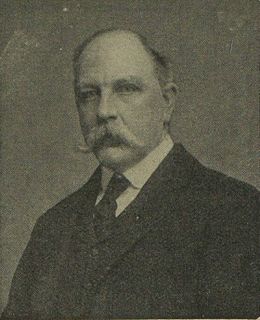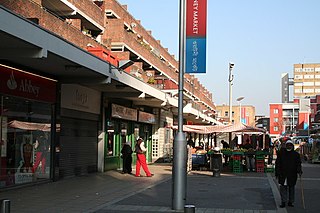
Bury St Edmunds is a constituency in Suffolk centred on the town of Bury St Edmunds that elects a member of parliament (MP) to the House of Commons of the Parliament of the United Kingdom.

Epping was a parliamentary constituency represented in the House of Commons of the UK Parliament from 1885 to 1974. It elected one Member of Parliament (MP) by the first past the post system of election. The seat underwent loss of territory at boundary reviews in 1945, 1950 and 1955 and was abolished for the February 1974 general election when it was divided between new seats Chingford, Epping Forest and Harlow.
Westminster Abbey was a constituency in the Parliament of the United Kingdom. It returned one Member of Parliament (MP) to the House of Commons by the first past the post system of election.

Henry Graham White, known as Graham White was a radical British Liberal Party politician.
Woodbridge was a county constituency centred on the town of Woodbridge in Suffolk. It returned one Member of Parliament (MP) to the House of Commons of the Parliament of the United Kingdom.
Sudbury was a parliamentary constituency which was represented in the House of Commons of the Parliament of the United Kingdom.
The Darwen by-election, 1943 was a by-election held on 15 December 1943 for the British House of Commons constituency of Darwen in Lancashire.
The Monmouth by-election, 1934 was a by-election held for the British House of Commons constituency of Monmouth in Wales on 14 June 1934. It was won by the Conservative candidate John Herbert.
The Westminster Abbey by-election, 1939 was a parliamentary by-election held on 17 May 1939 for the British House of Commons constituency of Westminster Abbey in London.

The St Ives by-election, 1928 was a by-election held on 6 March 1928 for the British House of Commons constituency of St Ives in Cornwall.

Sir Edward Beauchamp, 1st Baronet JP(12 April 1849 – 1 February 1925) was a British businessman and Liberal Party politician.
The National Liberal Party, known until 1948 as the Liberal National Party, was a liberal political party in the United Kingdom from 1931 to 1968. It broke away from the Liberal Party, and later co-operated and merged with the Conservative Party.
The South Somerset by-election, 1911 was a Parliamentary by-election for the South Somerset constituency. South Somerset was a county constituency in the county of Somerset, England, which returned one Member of Parliament to the House of Commons of the Parliament of the United Kingdom, elected by the first past the post voting system.
The Dundee by-election, 1917 was a parliamentary by-election for the British House of Commons constituency of Dundee in the county of Angus held on 30 July 1917.
The South Monmouthshire by-election, 1917 was a by-election held on Thursday 12 July 1917 for the British House of Commons constituency of the Southern Division of Monmouthshire in South Wales.
The Bury St Edmunds by-election, 1944 was a parliamentary by-election for the British House of Commons constituency of Bury St Edmunds, Suffolk on 29 February 1944.
The Epsom by-election, 1928 was a parliamentary by-election for the British House of Commons constituency of Epsom, Surrey on 4 July 1928.
Manuela Audrey Penelope Heather Sykes was a British Liberal Party politician who later joined the Labour Party.
Sir Frederick Ernest James was a British colonial administrator, businessman and Liberal Party politician.













